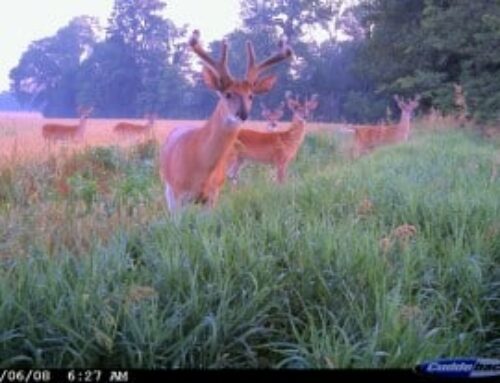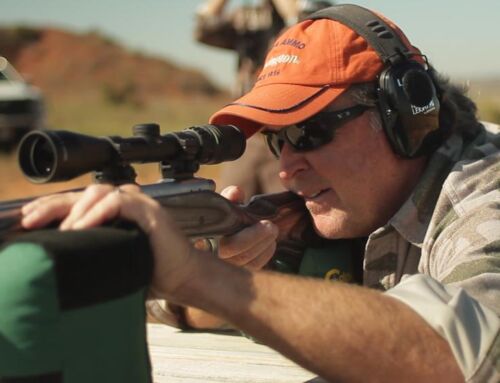Guest blog from Montana bowhunter Luke Strommen, a charter member of the Big Deer Hunt Team:
Here is story and a lesson I have learned.
One time I spotted a gnarly 6×6 buck during my scouting and glassing routines in the summer. The mature whitetail used his primary core area throughout July and August. I saw him many times and took some distant digital images of him from one of our tree stands. He would browse in an irrigated alfalfa field, and having completed his evening ritual, he’d sneak off to spend the night in a 20-acre corn field nearby.
He continued this pattern into the early archery season in September, consistently passing by one of my stands, but late. I waited for the wind to be right and sat the stand three times in early September, only to have the buck come by on the 16-yard trail just after legal and ethical shooting light.
This “12-point” as my Eastern friends would call him wasn’t the largest buck I had seen that summer on the Milk River, but he was a much sought after 6×6. A clean 6×6 is hard to come by, especially for a recurve hunter like me.
As the season progressed, the buck’s pattern changed, and he became less visible and more unpredictable. He would spend a week or 2 in different “sub-core areas” in the area as food sources changed with the late-fall weather pattern. Remember that, because any big deer you find now might do that in a few months.
But ultimately the buck came back to his familiar, primary core area where I had spotted him all summer, to the place where he felt most dominant and comfortable. I figured he would do that and I was right. I spotted his 12-point rack whirling and twirling early in the afternoon of November 1. He was warding off inferior bucks, posturing his antlers like weapons to the stubborn invaders of his domain.
Since I had scouted this area so much, I knew how the buck used the place, where he liked to travel. It paid off. That was back in the mid-2000s when there were a lot of deer on the Milk, and when I was guiding a few bowhunters on our farms.
I put a bowhunter from Texas in the same where I had spotted the 6×6 several times in low light in September. On the 2nd of November, with the pre-rut kicking into gear, the buck was a lot less cautious as he strode by the stand with 45 minutes of shooting light to spare. The hunter placed a sharp broadhead right through his oxygen tank
The big lesson: Scouting your buck early and often in the summer pays off, even if you can’t connect on him during the first weeks of archery season. You might “lose” your mature deer for a few days or even weeks, but the rutting phases of the fall will generally bring him back to his primary core area, where one day he might finally make a mistake. One day in late October, November or even December you might finally kill the buck from one of the stands you hunt in the first week. Good luck.—Luke








Good Stuff guys! Hunt Hard and good luck this season!
Good article. Same proven here in VA last year. nice bucks all summer long, few glimses of em here and there during bow season, brother took a nice mature buck we called “Mr Bones” chasing a doe very near where we had pics of em all summer.
I am convinced that now is one of the best times to find big mature bucks since nobody is chasing them yet. Once I know where they live, I figure I have just upped my odds considerably since they tend to disappear once hunting pressure steps up. Knowing where he calls home is huge…..he will return sooner or later. If you play your cards and the wind right….you may be there at the right time too! Here’s to the whitetail…….master of the thrill and king of frustration at the same time!
Always love to hear from you Brother Luke. I love your terms like “oxygen tank”. Good stuff.
Whitetails act similar in all regions, but I’d love to be able to glass an entire river valley like that. It’s a bit different in woodlot farm country; not entirely different, but with less timbered cover, a smudge different.
Your findings, however, are relevant to all whitetailers from all parts of the continent. One thing I learned from Sam Collora is to expect big bucks to return to their primary core area after the Primary Rut cools off. I find Luke’s use of the term “sub-core area” interesting too. Those big boys will always have their “other” areas they seek at different times of the season. Good stuff Luke.